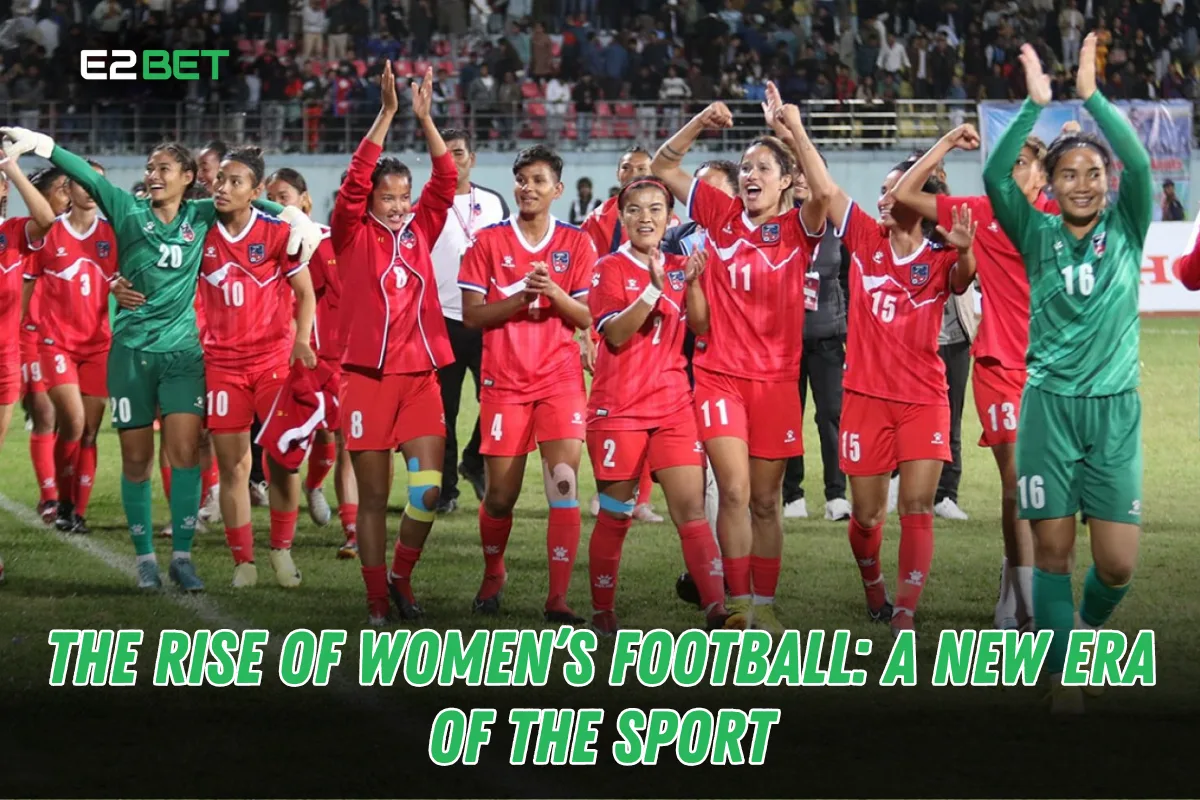Women’s football has come a long way from being overlooked and underestimated to becoming one of the fastest-growing sports in the world. Over the past few decades, the game has seen a surge in popularity, investment, and global recognition. With increased media coverage, sponsorship deals, and professional leagues, women’s football is now entering a new and exciting era. This article explores the journey, challenges, and future of women’s football, along with the factors driving its success.
The History of Women’s Football
Early Beginnings and Struggles
Women’s football history dates back to the late 19th and early 20th centuries. In countries like England and the United States, female footballers played the game recreationally. However, societal norms and gender biases often restricted their participation.
The Ban and Its Impact
In 1921, the English Football Association (FA) banned women from playing on FA-affiliated pitches, citing that football was “unsuitable for women.” This severely impacted the growth of the sport, forcing female players to form their own leagues without much support.
Breaking Barriers and the Revival of Women’s Football
Lifting the Ban and the Growth of the 1970s
After nearly 50 years, the FA lifted its ban in 1971, marking a turning point. The UEFA Women’s Championship in 1984 and the FIFA Women’s World Cup in 1991 played a crucial role in boosting women’s soccer tournaments worldwide.
Media Coverage and Representation
The role of media in women’s football cannot be ignored. Women’s soccer media coverage has significantly improved, with networks broadcasting matches globally. This has led to increased interest in professional female footballers and their achievements.

The Rise of Professionalism in Women’s Football
Increased Investment and Sponsorships
In recent years, major brands and companies have started investing in women’s football. Adidas, Nike, and Barclays sponsor leagues such as the FA Women’s Super League (WSL) and the National Women’s Soccer League (NWSL). These sponsorships help enhance the visibility and financial stability of women’s football clubs.
Better Pay and Facilities
The gender pay gap in women’s football remains an issue, but improvements have been made. While female footballers still earn less than their male counterparts, leagues are offering better contracts and improved training facilities. Some national teams, including the U.S. Women’s National Team, have fought for and won equal pay agreements.
Women’s Football on the Global Stage
FIFA Women’s World Cup and Its Impact
The FIFA Women’s World Cup has played a pivotal role in the sport’s growth. The 2019 edition in France broke viewership records, proving that women’s football can attract massive global audiences. The expansion of women’s soccer tournaments at the international level has also encouraged more young girls to pursue football professionally.
Growth in Club Football
Women’s football leagues worldwide, such as Liga F in Spain and the Frauen-Bundesliga in Germany, have gained prestige and attracted elite players. These leagues continue to expand, bringing more excitement and competition to club-level women’s football.
The Role of Social Media and Fan Engagement
Increased Visibility Through Digital Platforms
Social media platforms like YouTube and Twitter have helped boost women’s football popularity. Fans can watch FIFA Women’s World Cup highlights online, follow their favorite female footballers, and engage with teams more easily than ever before.
Star Players as Role Models
Players like Megan Rapinoe, Alexia Putellas, and Sam Kerr have become icons, advocating for gender equality and inspiring young athletes. Their presence in women’s soccer media coverage has helped drive more attention to the sport.
Challenges and Barriers That Still Exist
Gender Pay Gap in Football
Despite increased investment, female footballers still earn significantly less than male players. This disparity exists due to differences in revenue generation, sponsorships, and historical underinvestment in women’s football.
Recognition and Media Bias
Although women’s football news has gained traction, men’s football still dominates headlines. Scheduling conflicts, lower marketing budgets, and biased media narratives often limit the sport’s exposure.
The Future of Women’s Football
Increasing Investments and Support
The future of women’s football looks promising, with federations and clubs committing more funds to the sport. Barclays WSL and the UEFA Women’s Champions League continue to secure broadcasting rights, ensuring better access to matches.
Expansion of Women’s Football Tournaments
With growing interest, FIFA and UEFA are expanding women’s football tournaments, allowing more teams to compete on the global stage. This creates new opportunities for aspiring female footballers.
Conclusion
Women’s football has transformed from being marginalized to a global sensation. With increasing support, investment, and media attention, the sport is entering a golden era. However, challenges like the gender pay gap and media bias still need to be addressed. By pushing for equality and more opportunities, women’s football can continue to thrive and inspire future generations.
FAQs
Q1. When did women’s football start gaining popularity?
Ans. Women’s football gained popularity in the 1970s after bans were lifted, and major tournaments like the FIFA Women’s World Cup were introduced.
Q2. What are the biggest women’s football tournaments?
Ans. The FIFA Women’s World Cup, UEFA Women’s Champions League, and the Olympic women’s football tournament are among the biggest events in women’s football.
Q3. Why is there a gender pay gap in football?
Ans. The gender pay gap exists due to differences in sponsorship deals, media coverage, and revenue generation between men’s and women’s football.
Q4. Which countries dominate women’s football?
Ans. The United States, Germany, England, and France are among the most successful nations in women’s football, consistently performing well in international competitions.
Q5. How can women’s football continue to grow?
Ans. Increased investment, better media coverage, and grassroots development programs can help women’s football grow and reach new heights.